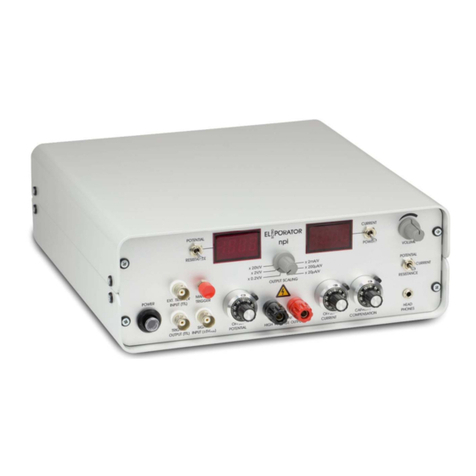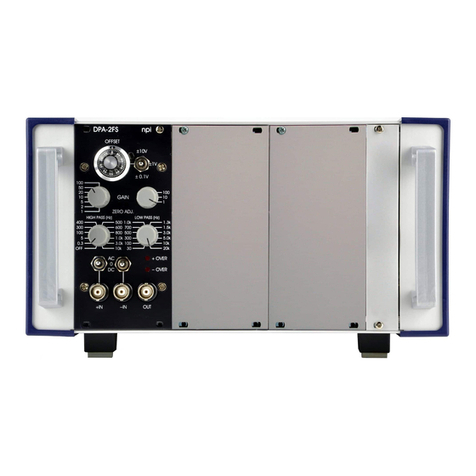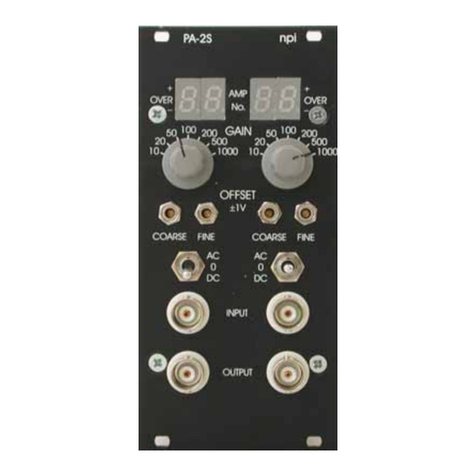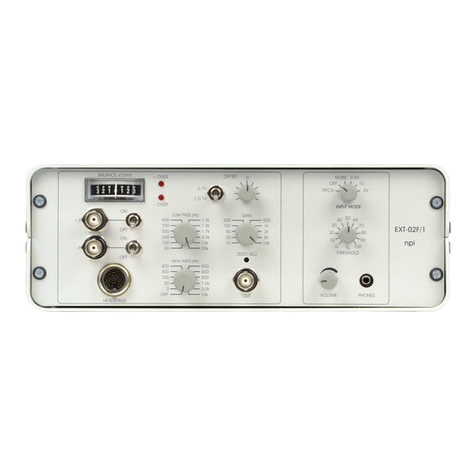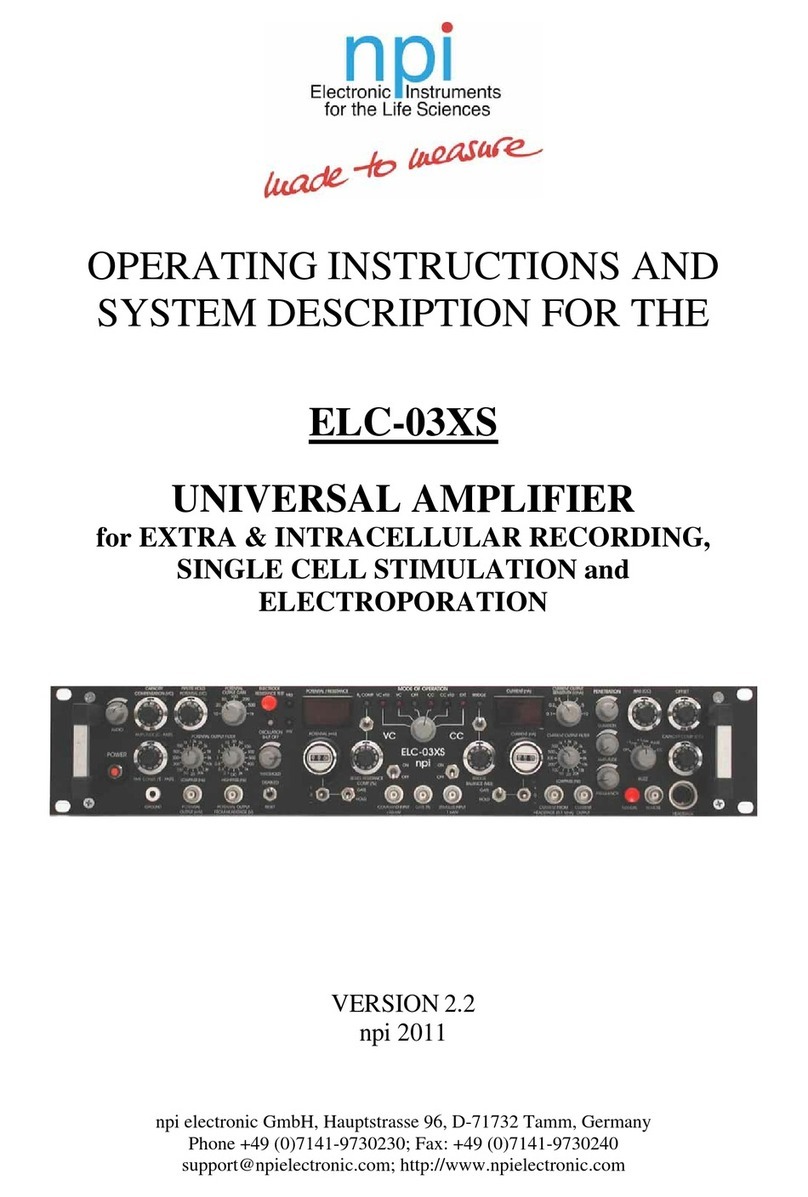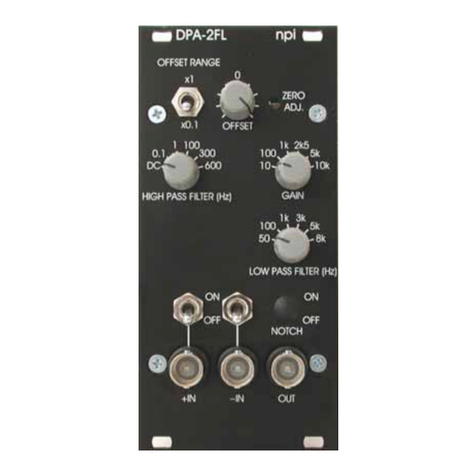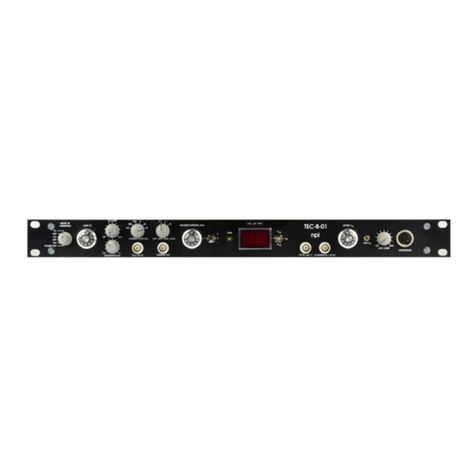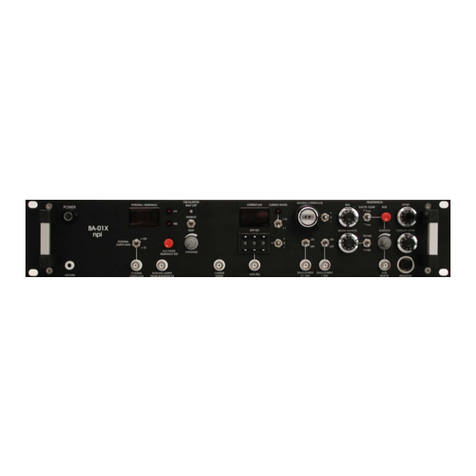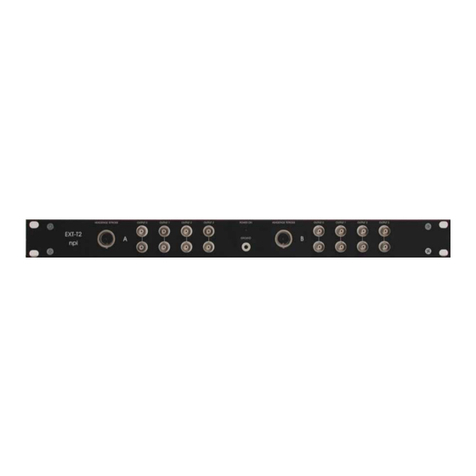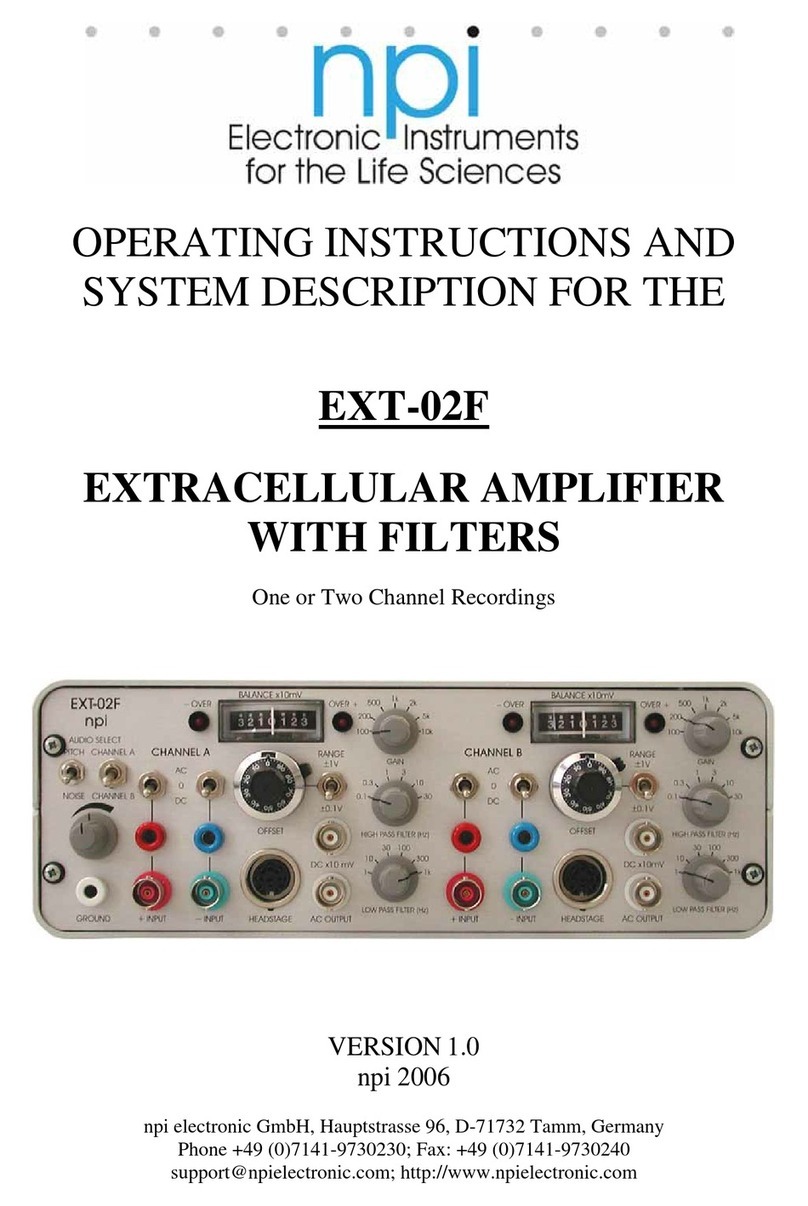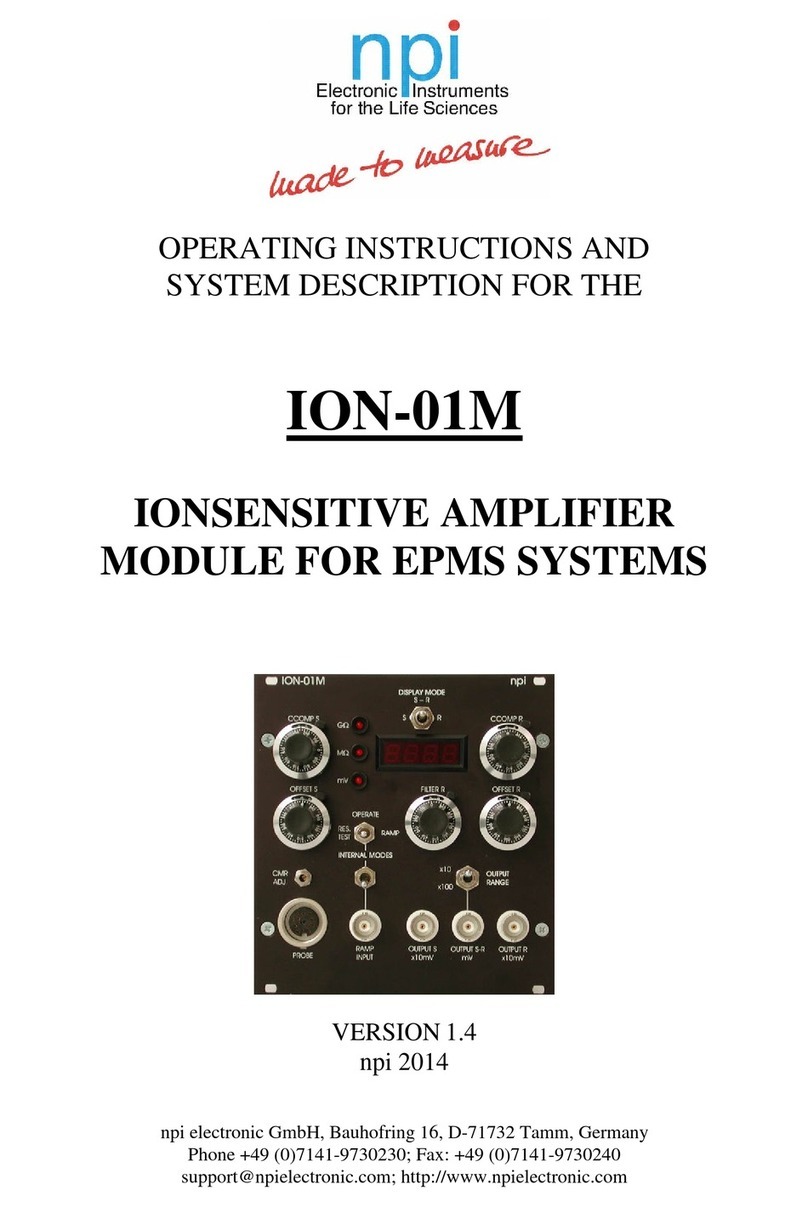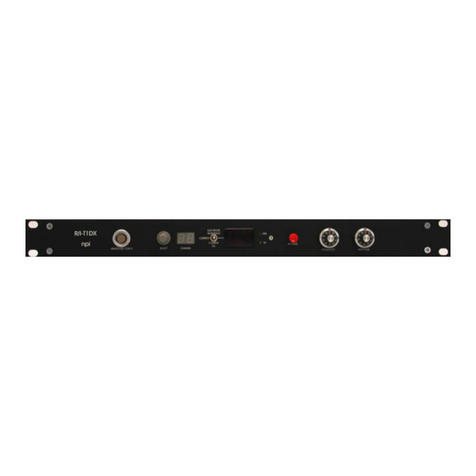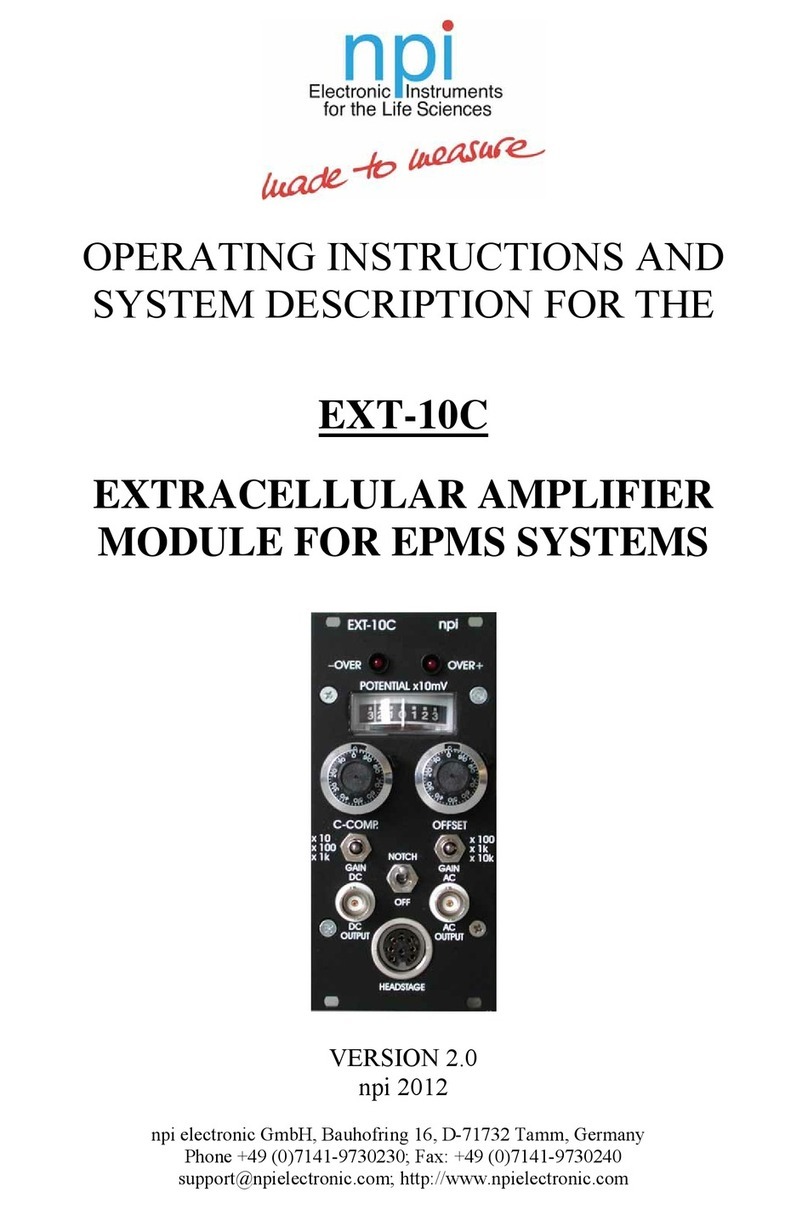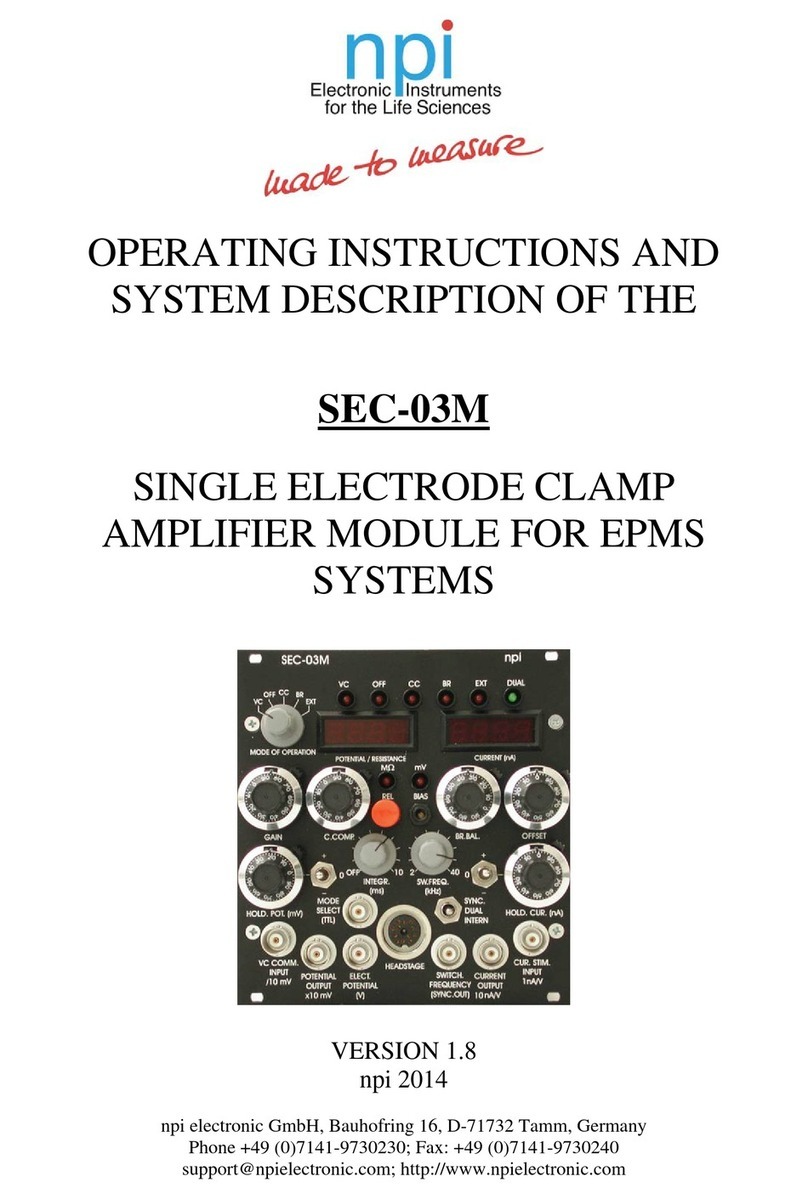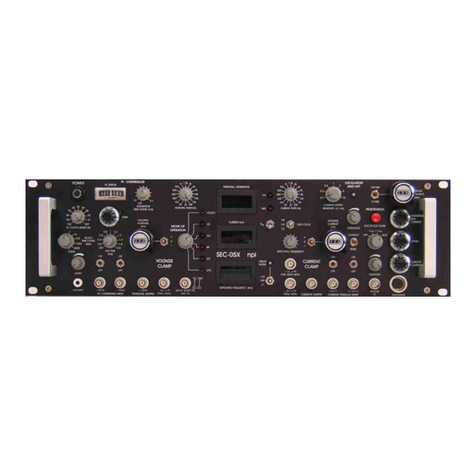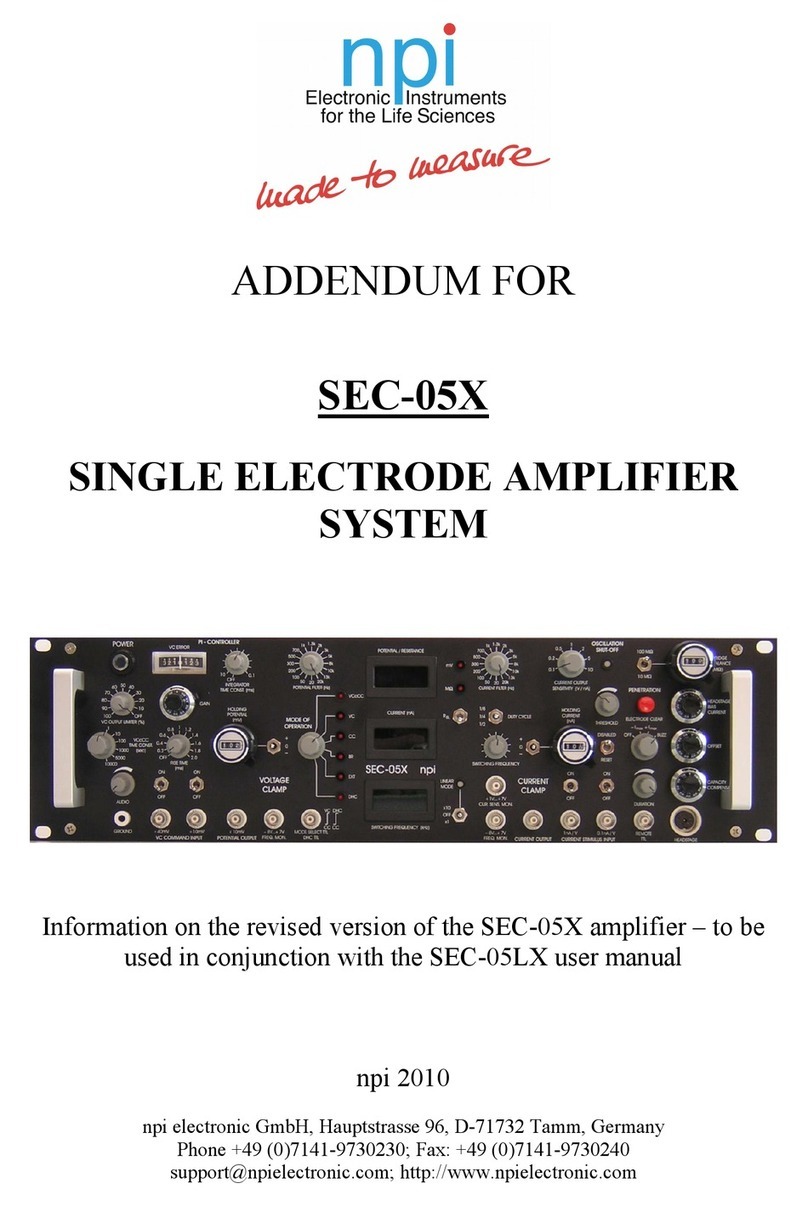ELC-01MX User Manual
version 2.6 page 7
3 Rationale
“Loose patch” recordings (or “loose seal” recordings [Roberts & Almers, 1992]) are used to
record from single excitable cells without damage, i.e. without a direct access to the cell
interior. This technique was described in a seminal paper, “A method has been developed
permitting measurement of membrane impedance and current, as a function of
transmembrane potential, at small, electrically isolated regions of the muscle cell surface
without microelectrode impalement.”[Strickholm 1961], twenty years before the introduction
of “tight seal recording” by Neher and Sakmann
[
Review in Sakmann & Neher 1995].
The loose seal has a resistance of a few ten to a few hundred MΩ, and it creates an electrically
isolated access to a single neuron. This isolated area can be used for precise recording,
stimulation, or drug and dye application on the single-cell level without damaging the cell
[Babour & Isope, 2000]. In contrast to tight seal recordings, this technique has the great
advantage that the same electrode can be reused for recording from several cells.
Since its beginnings, several attempts have been made to make such precise extracellular
methods accessible to various preparations. An excellent overview can be found in the chapter
by Roberts & Almers [Roberts & Almers, 1992]. Over the years the method was extended to
cultured neurons and brain slice preparations, and also for in vivo recordings [Bureau et al,
2004], Sakmann, 2006]. The method is particularly well suited for long term recording with
little damage to the recorded neuron [Nunemaker et al, 2003]. It can be used both for somatic
and axonal recording [Khaliq & Raman, 2005]. Even subcellular structures such as synaptic
boutons are accessible to loose patch recordings [Auger & Marty, 2000].
Another valuable application of this method is single-cell stimulation. The high resistance
loose patch allows the application of 1-2 V stimuli to only one cell [Babour & Isope, 2000].
In the nineties of the last century the method of juxtacellular dye application (juxtasomal
filling) became popular [Pinault, 1996]. This staining method is based on repetitive current
pulse trains applied in the close vicinity of cell somata or dendrites, and has now become well
established in the field of slice and in vivo preparations [Klausberger, 2004, Duque, A and L.
Zaborszky 2006, Pinault, 2011].
In parallel, attempts were made towards transfection of single cells by electroporation using
patch pipettes. DNA or other large molecules were successfully inserted through a patch
pipette into living cells by using an optimized protocol (application of 10 V / 1 ms pulse
trains) [Rathenberg et al, 2003, Stan et al 2010].
Another significant advance from classical in vivo recording methods [such as Lalley et al,
1999] is the use of this method in novel applications under in vivo conditions. An excellent
example of these kinds of technological advances are the studies of Helmchen and Stosiek
[Helmchen et al, 2002; Stosiek et al, 2003; Brecht et al, 2002, Nevian & Helmchen 2007],
which used patch clamp recording together with two-photon microscopy. Assays have also
been developed that enable both monitoring and manipulation of single cells under in vivo
conditions [Brecht et al, 2004]. Besides sophisticated optics, these techniques always require
precise recording and stimulation amplifiers that usually must work with patch electrodes.
High resolution in vivo recordings with ELC amplifiers are meanwhile a standard in many
labs [Geis et al, 2011, Resinger et al 2011], and by using miniature headstages recordings
from free moving animals are possible [Epsztein et al, 2011].

